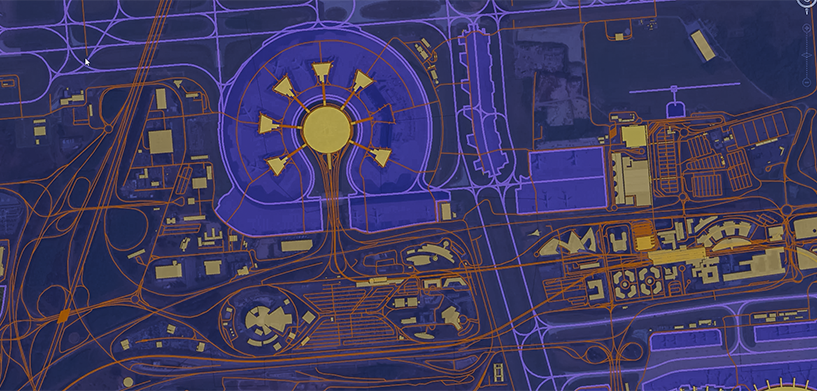Hexagon’s Safety, Infrastructure & Geospatial division recently released the new version of its popular Luciad portfolio. The 2023.1 release adds geospatial data access control support to LuciadFusion and 3D Tiles Engine structural improvements and security upgrades to LuciadFusion and LuciadLightspeed. It also adds support for Google’s Photorealistic 3D Tiles and enhanced data viewing and BIM data styling functionality to LuciadRIA, as well as new visualization (including MGRS grids) and styling tools to LuciadCPillar. Finally, it improves the developer experience in all products.
“In 2021, we released a 3D tiling feature for our customers who handle extensive 3D datasets. When users need full city models to scale, the data needs to be streamed in a tiled and multileveled way. For that very reason, the LuciadFusion and LuciadLightspeed 3D Tiles Engine was introduced, converting large 3D models for streaming as OGC 3D tiles,” said Sofie Haesevoets, Luciad portfolio senior product manager.
She continued, “Fast forward to 2023, we’ve significantly enhanced this 3D Tiling Engine to maximize efficiency further for both 3D reality capture data and building information models (BIM). These upgrades expand capabilities to users across industries and even in other products. For smart cities projects, Hexagon’s M.App Enterprise and HxDR use the same 3D rendering.”
3D mesh tiling upgrades
LuciadFusion’s 3D Tiling Engine got major upgrades in the 2023.1 release. Processing is now faster, more efficient and shows full city models to scale seamlessly.
Reality capture mesh data processing updates have been under development for nearly a year. Using this streamlined feature cuts the necessary storage for your data in half. It produces data three times faster, with four times fewer tiles and four times less memory required.
Data crafted by 3D modeling engineers now processes 10 times faster than before, using four times less memory and 10 times less storage – the resulting dataset contains four times fewer tiles. In the Luciad 2022.0 release, we included support for BIM in the Industry Foundation Classes (IFC) format, and later also added support for the Hexagon Binz format.
Note that the 3D tiling process preserves data attributes and information about materials, which can be used for realistic rendering. In addition, the produced tile sets contain compressed textures and geometries whenever possible.
Scalability
As software development kits (SDKs), Luciad products, including the 3D Tiling Engine, can be seamlessly integrated into any architecture and workflow. They can be used as standalone products for processing data, configured as on-premises processing services or expanded into cloud-based processing services.
Historical expertise in tiling
“One of the fundamental aspects of Luciad products is that they allow direct connection to data, without the need for conversion of data into proprietary databases or structures. However, as early as 2010 we recognized that poorly structured data impedes smooth handling and visualization in a 2D- or 3D-map view,” said Haesevoets. “Moreover, with more and more applications moving to the browser, the data needs to be efficiently streamed to the client application. Data streaming needs were an extra catalyst for optimizing the data structures.”
“We introduced our very first tiling engine for raster data in 2010. This includes a processor for imagery data, elevation data and multileveled raster data (for example, weather predictions). This processing engine still exists today and is used for imagery mosaics and worldwide coverage of elevation data of varying resolution, etc.,” added Luciad Product Manager Bruno Rocha Pereira.
“In 2018, the processing capability was extended with a point cloud processing engine addressing the increasing density of point cloud scans and expectations for near-photorealistic rendering. Today, tiling and multileveling of point clouds, combined with progressive visualization settings on the client, contribute to high-quality point cloud rendering using Luciad’s visualization engines,” he added.
“Subsequently, we introduced tiling for 3D meshes, BIM data and panoramic images. With each added data type, we can rely on years of expertise with tiling data for optimal streaming and visualization. Today, our tiling engines are a standout feature of Luciad products.”
Maximizing new features
“In the 2023.1 release, we incorporated various enhancements and feature upgrades. Noteworthy among these are LuciadCPillar’s addition of raster styling for highlighting differences across separate datasets, LuciadRIA’s infinite panning for seamless data viewing across the International Dateline and LuciadFusion’s expanded control parameters for bolstering information access control, among others,” Haesevoets concluded.
At Hexagon, we strive to consistently surpass our customers’ expectations. To understand how we achieve this with our Luciad products, we invite you to read the release guides for LuciadFusion, LuciadLightspeed, LuciadCPillar and LuciadRIA.















